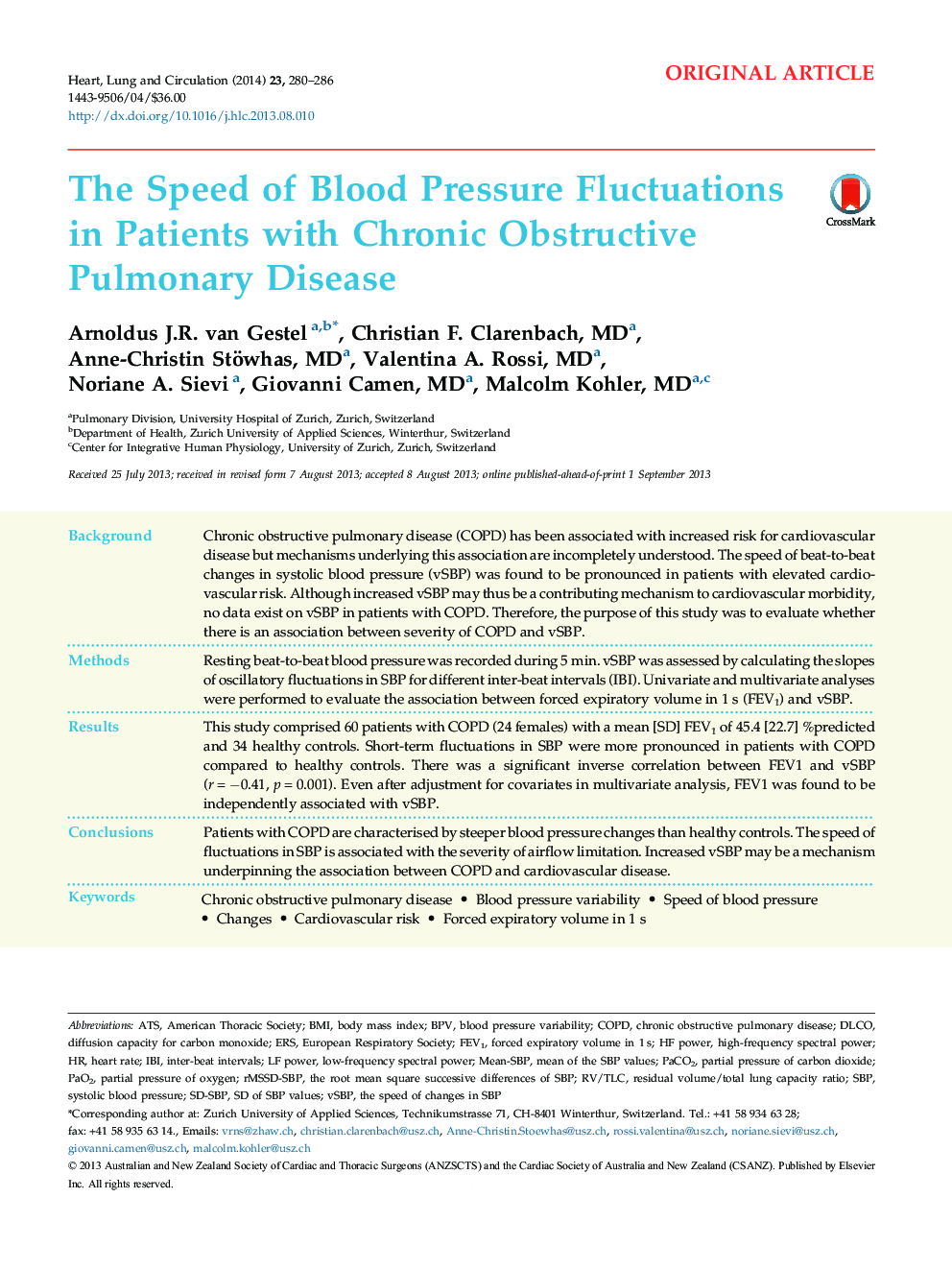| Article ID | Journal | Published Year | Pages | File Type |
|---|---|---|---|---|
| 2917869 | Heart, Lung and Circulation | 2014 | 7 Pages |
BackgroundChronic obstructive pulmonary disease (COPD) has been associated with increased risk for cardiovascular disease but mechanisms underlying this association are incompletely understood. The speed of beat-to-beat changes in systolic blood pressure (vSBP) was found to be pronounced in patients with elevated cardiovascular risk. Although increased vSBP may thus be a contributing mechanism to cardiovascular morbidity, no data exist on vSBP in patients with COPD. Therefore, the purpose of this study was to evaluate whether there is an association between severity of COPD and vSBP.MethodsResting beat-to-beat blood pressure was recorded during 5 min. vSBP was assessed by calculating the slopes of oscillatory fluctuations in SBP for different inter-beat intervals (IBI). Univariate and multivariate analyses were performed to evaluate the association between forced expiratory volume in 1 s (FEV1) and vSBP.ResultsThis study comprised 60 patients with COPD (24 females) with a mean [SD] FEV1 of 45.4 [22.7] %predicted and 34 healthy controls. Short-term fluctuations in SBP were more pronounced in patients with COPD compared to healthy controls. There was a significant inverse correlation between FEV1 and vSBP (r = −0.41, p = 0.001). Even after adjustment for covariates in multivariate analysis, FEV1 was found to be independently associated with vSBP.ConclusionsPatients with COPD are characterised by steeper blood pressure changes than healthy controls. The speed of fluctuations in SBP is associated with the severity of airflow limitation. Increased vSBP may be a mechanism underpinning the association between COPD and cardiovascular disease.
